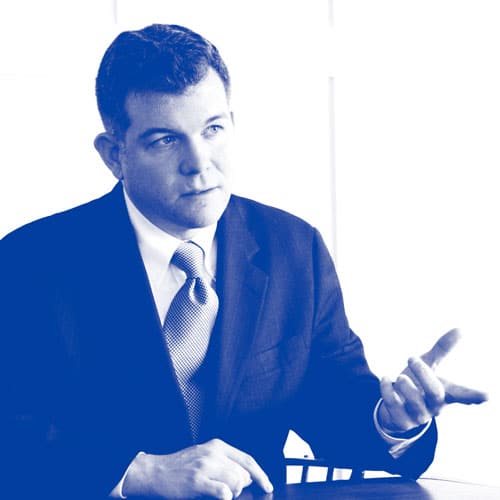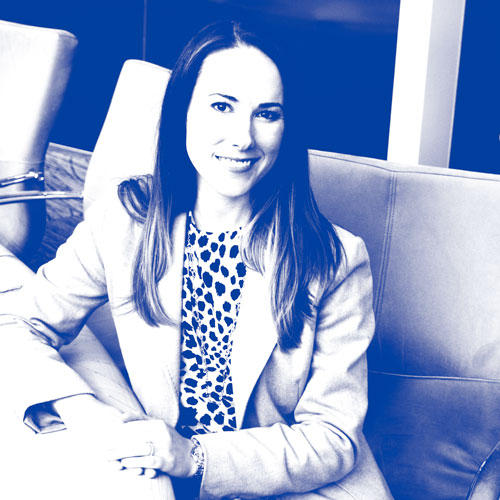“If I don’t do this now, I might have to start from scratch,” Ryan Van Meter remembers saying to himself in his third year working for Georgia congressman John Linder. His work was interesting, encompassing everything from ironing out the details of the US Clean Air Act to drafting a bill to redraw the border between Georgia and South Carolina to save an individual from being deported.
But his LSAT score had an expiration date, and Van Meter was convinced that if he was going to nurture his newfound expertise in environmental policy and politics to become the world’s next great litigator, the time was nigh.
Yet Van Meter’s career path took a turn from litigation. While still in law school at the University of Virginia, he spent half a summer in the US Environmental Protection Agency’s office of general counsel in a competitive clerkship. Then he spent summer 2003 at Alston & Bird, becoming an associate in the law firm’s land use group.

Not long after, Van Meter was placed in a role outside of litigation, on the transaction side. His work handling environmental compliance issues, mergers and acquisitions, even the eye-drying details of procuring a client’s interior designer’s license, was not exactly the high-profile drama of John Grisham novels.
Soon, however, Van Meter realized transactional law was his calling, giving him the chance to solve problems outside the rules of discovery and evidence—writing contracts on the spot and working with people who weren’t lawyers. “In litigation, parties come to the problem wanting to fight,” Van Meter says. “In a transaction, people come to a problem wanting to work it out. The energy is more productive and creative.”
Van Meter relished the work, but his growth at Alston & Bird had a ceiling. He was a jack-of-all-trades. The firm, at least at its top levels, was looking for specialists. “In my third year, I attended a seminar on what it takes to be a partner. It was a great seminar, and I realized I wanted absolutely nothing to do with it,” he recalls.
So when Van Meter’s mentor, Doug Cloud, gave him the tip that one of the firm’s clients, Imerys, was hiring, he jumped at the opportunity. After interviewing twice, Van Meter secured a position as vice president and general counsel for the French multinational mineral producer’s rapidly growing North American division.
Van Meter will be the first to tell you Imerys is not a household name. The firm processes a number of minerals and materials most people don’t recognize, or at least ones that don’t often surface on the pages of BuzzFeed. These resources, however, are the raw ingredients of a highly profitable industrial backstage that supports all kinds of consumable goods and high-tech applications.
Within Imerys’ portfolio are minerals like calcium carbonate, which is used to make paper white; talc for cosmetics and paint; mica for engineered plastics; and perhaps most curious: diatomaceous earth, a substance comprising the fossilized silica shells of diatoms, a hard-shelled algae whose largest marine reserves are found in California. “This silicate secreted for millions of years filters almost all the beer you consume,” Van Meter says, noting the quiet power of an industry few realize.
Imerys’ February 2015 acquisition of the Greek mining company S&B, along with the recent absorption of BASF’s paper hydrous kaolin reserves and Solvay’s Precipitated Calcium Carbonate division in North America, adds to the firm’s growing mineral portfolio. Such growth has helped the company claim its position as the market leader of reference, Van Meter says, or the second largest producer for nearly every mineral or material it procures and processes.
The company reported sales revenue of more than €3 billion over the first three quarters of 2015, according to financial data on the Imerys website. In the last four years, it has rapidly expanded its footprint in the developing world, opening a monolithic refractory plant in India, a fused alumina plant in Bahrain, and an andalusite plant in China.
“In litigation, parties come to the problem wanting to fight. In a transaction, people come to a problem wanting to work it out. The energy is more productive and creative.”
In his office in Roswell, Georgia, Van Meter helms a ten-person legal team responsible for the entirety of Imerys’ North American legal affairs. Their work, he says, is as varied as the minerals that Imerys mines. On any given day, that could mean reviewing employment and hiring matters, minimizing the company’s risk in acquisitions and mergers, or ensuring compliance with evolving environmental regulations—covering everything from carbon emissions levels to land use.
Many of the firm’s reserves—such as high-purity quartz used to build microprocessors—are particularly valuable, given limited supply and strong demand in emerging markets. This circumstance makes Van Meter’s job as much about answering thorny legal questions as working with colleagues to formulate the contractual language to strike strategic business deals.
“I spend my days talking to other lawyers, hiring, and litigating, but the most important things I’ve learned so far come from the engineers, finance people, general managers, and safety and environmental folks in the trenches,” Van Meter says. “Lawyers like to think their work is the most interesting or important to a company; it’s not true, it’s just a different kind of work.”
Notably, Van Meter has had to educate himself on the legal issues surrounding a widely publicized land swap on New York State land in the Adirondacks. As reported in the New York Times, a 2013 amendment to the New York Constitution granted NYCO Minerals permission to conduct open-pit mining on 200 acres of state land, with the caveat they would add 1,500 acres to the Adirondack Forest Preserve. The language of the narrowly passed referendum was developed by NYCO in collaboration with the New York State Department of Environmental Conservation.
When Imerys absorbed NYCO as part of the S&B acquisition, Van Meter was called on to advise the company’s central office in Paris about the legal ramifications of the deal. In short: Imerys, through its subsidiary NYCO, is interested in expanding an existing mine adjoining the forest reserve land to extract wollastanite, a mineral used in the production of paints and plastics.
Van Meter says the land swap, requiring nothing less than a rewriting of the state’s constitution, is a novel public-private collaboration that is environmentally sensitive and economically beneficial—the kind of creative, problem-solving approach to the law that he finds appealing.
Somewhere deep in his blood, Van Meter claims a traceable connection to mining: his mother’s father built oil and gas pipelines in Alaska; his father’s father was a coal miner in West Virginia. Yet until he arrived at Imerys, he had no real experience in the industry.
The need to continuously learn and adapt has kept him on his toes, whether that means hashing out a contractual provision for energy surcharges, or working on strategic asset acquisitions in the middle Georgia kaolin belt.
“It’s been a steep learning curve, there’s no question. It’s a really exciting time for the company. We’re looking for new ways to grow the business and make changes quickly,” Van Meter says. “It’s impossible to understand our full portfolio because we’re always trying to grow it in a way that strengthens our position.”

